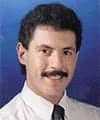To develop a home health care program for mechanically ventilated patients, RCPs must apply medical, psychosocial, and technical principles.

Although home care for mechanically ventilated patients has evolved over the past half century, universal principles apply over time (and in every locality). RCPs caring for patients who require long-term mechanical ventilation at home need to appreciate and understand these principles and how they can be adapted to changing circumstances. To develop a home health care program for mechanically ventilated patients, RCPs must recognize and satisfy criteria in six categories: medical, psychosocial, environmental, technical, organizational, and financial.
Medical Principles
Home care is family centered and represents a culture different from that of traditional institutional care (the medical model). To improve communication, each participant must understand the terminology and concepts that serve as a common language.
Candidates for mechanical ventilation at home have either chronic respiratory failure or chronic respiratory insufficiency; these are defined according to the amount of time that the patient can breathe safely without mechanical assistance. Chronic respiratory failure is a life-threatening situation that is due to a problem with oxygenation and/or ventilation and that has a duration of more than a month. An example would be a high (C1-2) spinal-cord injury in an adult patient. Such a candidate probably has very little ability to breathe without support, and disconnection or mechanical failure would constitute a threat to life.
Chronic respiratory insufficiency is a life-affecting situation that is also due to a problem with oxygenation and/or ventilation and that has a duration of more than a month. An example would be bronchopulmonary dysplasia. In the absence of acute clinical decompensation, a child with such a condition probably could breathe for days without sufficient fatigue to result in a threat to life. Suboptimal ventilation, however, would result in physiological alterations that would affect the child’s life and well-being (energy, activity, functioning, growth, and development).
To succeed with home care, the candidate must exhibit clinical stability. A care program that requires many changes over a period of time is difficult to develop, implement, and finance. Frequent diagnostic decisions and therapeutic changes make home care programs too complex and costly.
Medical stability is a condition in which the patient does not require major diagnostic evaluation or therapeutic intervention for a defined period of time (such as a month). Medical instability, on the other hand, calls for one or more diagnostic/therapeutic changes within the defined time period.
The medical technology to be applied in the home should be adapted or designed for the home setting. During the polio era, these devices were called mechanical aids for breathing, which was defined as any device, based on any principle, that augmented or replaced the natural effort to breathe. By using such open-ended terminology today, technologies based on multiple principles can be included in the definition, whether invasive or noninvasive and employing positive or negative pressure. This broad definition opens the home care setting to innovative technological applications or designs.
Individuals who require prolonged ventilator support are called ventilator-assisted individuals. These patients have a condition that calls for a mechanical aid for breathing for at least 4 hours per day for a period exceeding a month. The duration of therapy becomes important in planning clinical programs in various care settings, as well as when public policies that affect reimbursement are being set.
Mechanical aids for breathing are applied using the principle of optimal ventilation. This is the application of technology to assist ventilation in a way that reproduces, as closely as feasible, the cardiopulmonary function appropriate for the patient’s age and clinical condition.
Conditions suitable for home care may be attributable to a variety of medical and surgical causes. They can be due to congenital defects or acquired illnesses; they can begin as acute, life-threatening diseases or result from the progression of chronic diseases. More important than etiology is the category of organ-system malfunction. Conditions treated in the home can be due to cardiopulmonary, neuromusculoskeletal, or central nervous system (CNS) pathophysiology.2 Selection criteria are necessary for determining when an individual exhibits chronic respiratory insufficiency and when a person has become medically stable using mechanical aids for breathing. Selection criteria are based on the underlying pathophysiology, with specific criteria being used for cardiopulmonary, neuromusculoskeletal, and CNS conditions.3
Pathophysiology is the most important element for the analysis on which the diagnosis, treatment, prognosis, and organization of the home care program are based. Soft signs (fatigue, activity, real weight gain, and body mass) are important. These signs provide evidence for optimal support.
Optimal support is the goal: technology should be used not just to get by, but to realize the greatest functional potential of the patient. The objectives are to reduce the risk of acute clinical decompensation, to augment functional reserve, to achieve medical stability, and to create the best conditions for the growth and development of children. The elements of support are optimal ventilation, pharmacology, nutrition, and psychosocial and developmental stimulation. There is no one definitive prescription for optimal support.
Medical principles constitute the first criterion for successful mechanical ventilation at home. Like all the criteria to follow, it must be met, or the situation is not appropriate for home care.
Psychosocial Principles
Each child has the potential for development, and each adult can improve abilities for daily living. Both goals can be best realized using a comprehensive program of rehabilitation and education. Every professional member of the interdisciplinary health team must describe desired functional outcomes from his or her own perspective. At the time of transition to home care, hospital-based team members must work collaboratively with their counterparts in the community to transfer their responsibilities.
To succeed, the home respiratory care program must be centered on the individual and family. As soon as possible in the hospital, patients must be encouraged to participate in direct self-care and to make decisions regarding their own health. When members of the family are included in resolving difficult problems, they have a better understanding and acceptance of the results. Their participation creates involvement and motivation, which are essential for their future roles in the home.
A family-centered program requires professionals and supplemental care providers as each patient’s needs dictate. Families need flexibility to accommodate their lifestyles and schedules. Conflicts often occur between families and professionals regarding expectations and responsibilities. In certain instances, it may be better to use personal attendants (trained and supervised by families and appropriate organizations).
Professionals cannot provide all the understanding and support required by families. In collaboration with self-help groups, however, professionals can meet many of the social and psychological needs of patients who need respiratory care at home (and their families). Individuals who need respiratory home care must be informed, must accept all that is involved, and must demonstrate that they are capable of doing all that is required.
Environmental Principles
If home respiratory care is to be successful, the hospital must be supportive. Designated units with experience in the transition from hospital to home must be available to stabilize the patient and to prepare the patient, family members, and other care providers for their roles and responsibilities. These units should have facilities where family members are comfortable and staff members encourage family participation in care delivery and medical decision-making.
A supportive home environment has an accessible building with adequate space for the family, equipment and supplies, and supplemental caregivers. The house must be evaluated for sanitary conditions, building safety, and the availability of required access to electrical power. Fuel-driven electric generators should be considered (rural areas) for patients who require life-supportive technology.
Community support is also an important factor; it includes the availability of accessible transportation, communication, utilities, and emergency services. Community resources for education, work, recreation, health, and spiritual needs must be available.
Technical Principles
Each respiratory home care program needs to suit the individual situation. Each requires a written prescription that details required equipment, supplies, and techniques adapted to individual needs.
Every person requiring mechanical ventilation at home needs a system of monitoring adapted to the situation. Alarms supplement, but can never replace, the need for a prepared, qualified, and alert caregiver. Most home care devices are designed with internal alarms that can provide digital information for remote recording and transmission.4 Some external alarms may also be recommended to monitor physical and physiological parameters.
Properly identified candidates who receive optimal support should not require techniques or technologies designed for hospital use. They are too complicated and expensive, and their use is too difficult for family members to learn. If candidates are well chosen, equipment can be simple, with few options. Specific needs are best met with creative solutions found by the care team and family. Usually, these innovations are better understood and accepted by patients.
Recreating the intensive care unit (ICU) at home is not desirable. Complicated, expensive equipment justifies its professional control. The less the setting resembles a hospital, the more the family is in charge and the more the atmosphere promotes health. For family-centered care, equipment must be robust and easy to use, maintain, and repair. Due to household space limitations and the patient’s desire for mobility, equipment must be small and lightweight.
Everyone involved must be prepared, and their technical skills and understanding must be evaluated. However well prepared they may be, families vary in their technical skills and experience. It is essential to have professional technical experts available who will assume responsibility for surveillance, maintenance, and repair of life-supportive technology. They must act in liaison with members of the distribution system (suppliers, vendors, and manufacturers) to update their product knowledge. Medical devices at home will be increasingly linked via telemedicine to supply-chain participants and health professionals for data exchange and interactive communication.4
Home respiratory care technology must be as simple as possible, must have provisions for monitoring and digital data transmission, and must have mechanisms for routine maintenance and emergency repair.
Success at home requires attention to organizational details for each individualized plan. The goal is to establish a plan (adapted to each locality) that encourages the participation of all who should be involved.
Each case has a primary care team whose members know the clinical needs of their patients best. These professionals should think of home care as soon as possible. To facilitate discharge and continuity of care in the community, the primary care team should be joined by a core team of home care experts who understand the operational and cultural needs of home care. Together, they constitute an extended team required to plan and implement home care. The extended team should include members from the hospital and community whose participation is essential for success.
The operational plan must describe the components of home care from the perspective of each member of the health care team. It must outline all routine emergency procedures from the perspective of the community participant. It must include an evaluation of the home and community, correspondence with all essential service providers, and documentation from support services. It must also provide mechanisms for coordination and communication (with definitions of roles, responsibilities, and relationships). This written program serves as a legal document for risk management.
Each home care candidate requires an individualized educational plan that defines the plan’s objectives, teaching methodologies, and learning evaluation. Education should be conducted prior to discharge, although it may be supplemented at home. Both classroom and clinical instruction are necessary, and each person (patient, family, and care providers) must be observed and evaluated for understanding of, and skill with, techniques and technologies used in the home. Documentation is essential for medicolegal purposes and to ensure the future education of others. It is inadmissible to permit discharge before all involved are well prepared and learning has been evaluated.
There are universal principles and procedures in home care, and many patients can benefit from similar services. A generic operational program can, therefore, be prepared in advance. Because each individual is unique, however, each case requires flexibility and adaptability. Written documentation prepared just for one case accomplishes this and is the legal home care prescription.
Respiratory home care requires many participants whose tasks must be coordinated and integrated. To achieve this goal, a case coordinator should be assigned. In some case, this function can be assumed by a member of the family; in other cases, this may be a professional. In addition, each case requires a case manager. This independent person should be skilled in all aspects of the case: financial, administrative, and clinical. This individual should be responsive to the needs of all participants in respiratory home care: the family, professionals, service providers, and reimbursement authorities. Although case managers can be advocates for the family, they remain accountable for the determination of medical appropriateness within the constraints of quality, safety, and cost.
In each case, management of quality and risk5 involves mechanisms used to determine whether quality criteria have been satisfied. A program prepared with predetermined quality indicators and evaluation procedures represents good risk management. Determination of quality also helps in evaluating outcomes for program modification and improvement.
Financial Principles
Families, health care professionals, and service providers must be assured in advance that reimbursement will be available for what is medically required. Determining what is medical necessary and essential for patient safety in the home remains the most important justification for physician participation in home care. Inadequate reimbursement creates anxiety and financial hardship for families and raises doubts and concerns among health professionals. It deters nursing agencies and durable medical equipment vendors from being willing to provide home care services (due to financial risk). If medical appropriate care is unlikely to be provided for this reason, it may create resistance, in physicians, to the prescription of home care. On a case-by-case basis, those responsible for payment can usually be approached by the physician; they will be reasonable if there has been a sincere effort to explain what is medically necessary, and why.6
It is better to negotiate a mutually acceptable solution to problems in home care funding through interactive dialogue among colleagues. Problems become more difficult to solve when it has been determined that a standardized procedure or policy is required. Such an approach creates categories that are not flexible enough to meet individual needs and that add cost to home care. It is also far more difficult to organize home care when payment authorities arbitrarily create more rigid rules and regulations. Individual home care needs innovation and creativity.
Medicaid entitlement programs have established payment policy waivers by law and regulatory interpretation. According to these regulations, home care must be less expensive than care in a hospital (or an alternative institution). Funding depends on the proposed waiver submitted by the state for approval of the Health Care Financing Administration (HCFA). Not all states have applied for these policy waivers; when granted, they specify a limited number of cases. Depending on the perspectives of the waiver authors, and with the permission of HCFA, they may allow for innovative approaches to quality and cost management in care. One such approach would include personal attendant care that is well supervised and evaluated.6
Recent Medicare payment policies for home care personnel and equipment have limited the scope and practice of home mechanical ventilation. Experts from professional societies (the American Academy of Home Care Physicians, the American Association for Respiratory Care, the American College of Chest Physicians, the American Sleep Disorders Association, the American Thoracic Society, and the National Association for Medical Directors of Respiratory Care) have been working together to define medical necessity7 and to create expert guidelines for mechanical ventilation outside the ICU.8
One recent approach to cost containment has been family-centered case management. The future of high-technology home care depends on improvements in quality and containment of costs. In practice, there are few incentives supporting quality improvement because public funding regulations and managed care practices focus on payment. Families, too, have an interest in containing costs. They make important observations, can analyze expenses, and can improve the cost management of their own programs. Often, families can work closely with employers and insurers to explain and modify the patient’s needs. Families should be given a central role, working with their case managers toward family-centered case management.
Essential reimbursement should be requested, justified, and provided. Due to the catastrophic cost of high-technology home care, creative funding solutions may require collaboration among families, physicians, and payors. N
Allen I. Goldberg, MD, is professor of pediatrics and director of pediatric home health, Loyola University Chicago.
References
1. Laurie G. Introductory remarks. In: Faure EAM, Goldberg AI, eds. Proceedings of an International Symposium: What Ever Happened to the Polio Patient? Chicago: Northwestern University Press; 1982:37-39.
2. Goldberg AI. Pediatric high technology home care. In: Rothkopf MM, Askanazi J, eds. Intensive Homecare. Baltimore: Williams & Wilkins; 1992:199-213.
3. Rothkopf MM, Goldberg AI. Pediatric home ventilatory support. In: Rothkopf MM, ed. Standards of Practice of Homecare Therapeutics. 2nd ed. Baltimore: Williams & Wilkins; 1997:281-293.
4. Miyasaka K, Susuki Y, Saka H. Interactive communication in high-technology home care: videophones in pediatric ventilator care. Pediatrics. 1997;99:1e-6e.
5. Goldberg AI, Noah Z, Fleming M, et al. Quality of care for children who require prolonged ventilation. Quality Review Bulletin. 1987;13:81-88.
6. Goldberg AI, Trubitt MJ. An integrated approach to home health care. Physician Executive. 1994;20:45-46.
7. Clinical indications for noninvasive positive pressure ventilation in chronic respiratory failure due to restrictive lung
disease, COPD, and nocturnal hypoventilation—a consensus conference. Chest. 1999:116:521-534.
8. Make BJ, Hill NS, Goldberg AI, et al. Mechanical ventilation beyond the intensive care unit. Report of a consensus conference of the American College of Chest Physicians. Chest. 1998;113:S289-S344.









